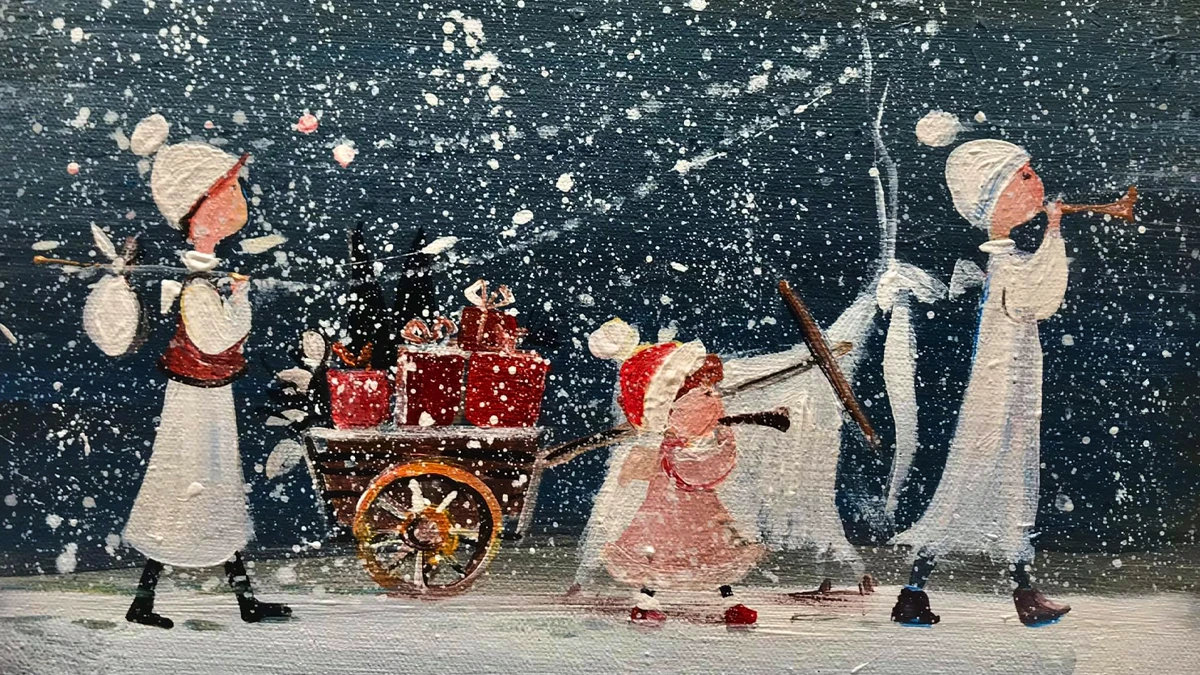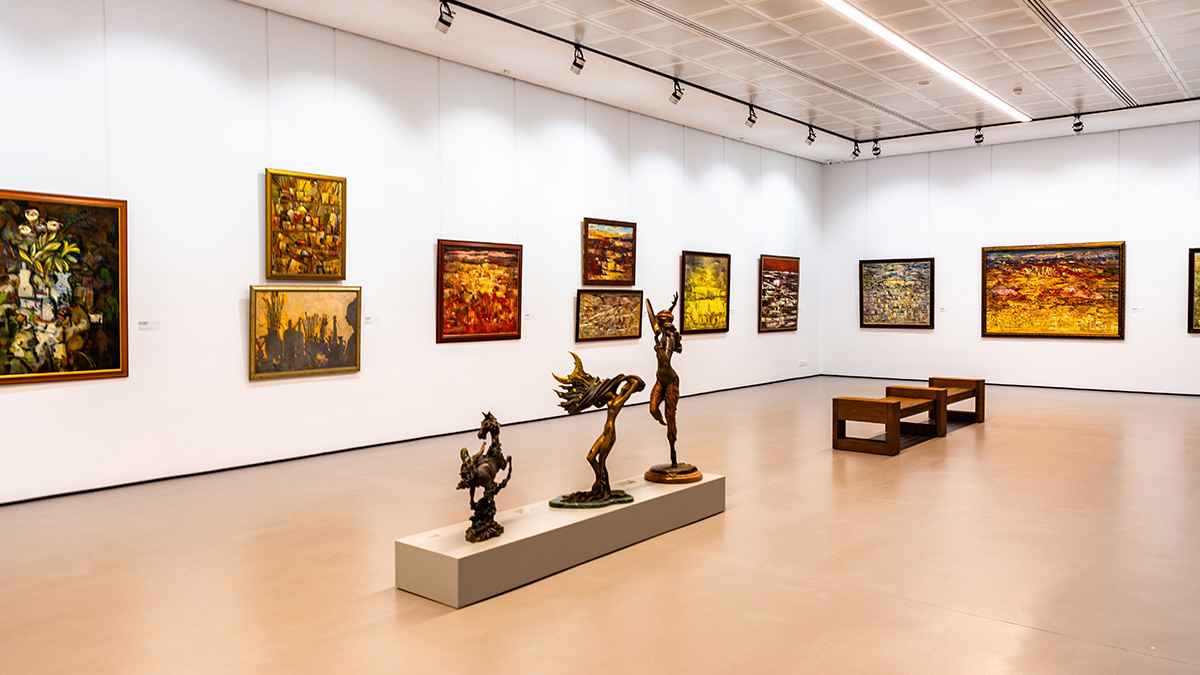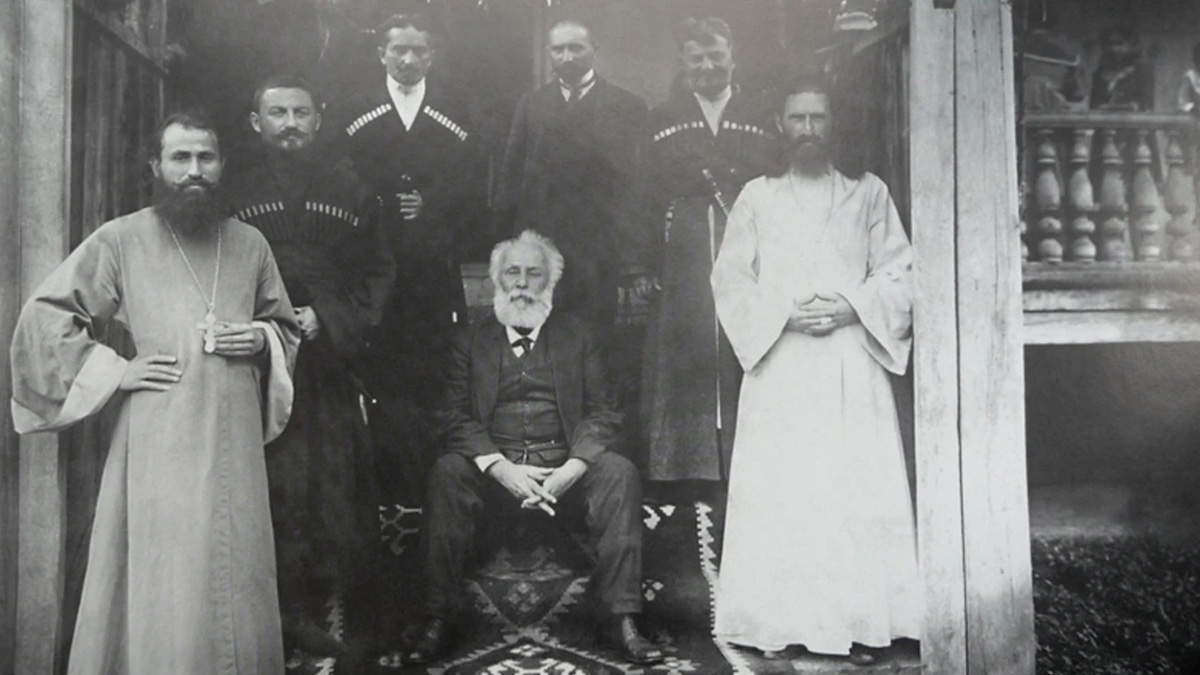12 Georgian Painters to know enjoy and appreciate
Georgia is the home of creative people, so if you appreciate art you should not miss out some of the most acknowledged artists of the latest history.
Niko Pirosmani – genius of the advanced simplicity (1862 – 1918)
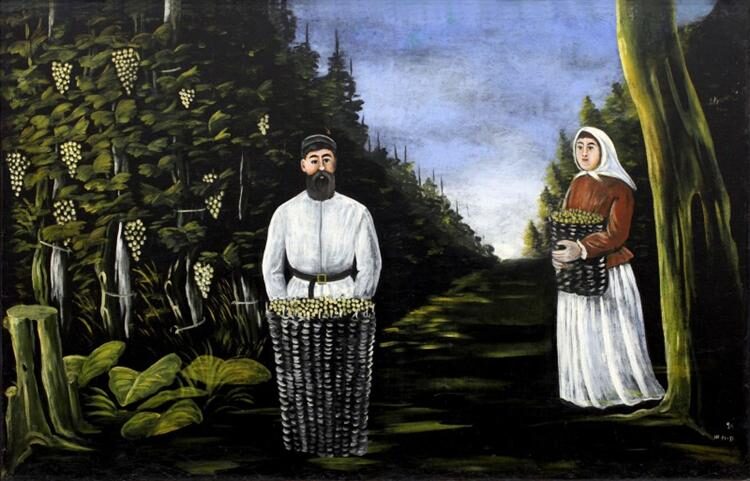
Photo Source: Wikiart
Impeccable simplicity of sophistication, glory of innocence and naïve journey of joy – that is Pirosmani. Born in 1862, he lived his whole life in extreme poverty and had to paint the walls and signboards of local restaurants for living. Pirosmani’s paintings mostly depict Georgian festive occasions, peasants, merchants, he liked to paint animals just like children do. Impressed by Niko’s paintings, Pablo Picasso painted his portrait. The portrait (which is a graphic painting, with straight pencil sticks) perfectly well reflects the geniality of Pirosmani’s primitivism. After seeing Pirosmani’s paintings one can easily understand what Picasso meant when saying “It took me four years to paint like Raphael, but a lifetime to paint like a child’’.
David Kakabadze – Innovation matured by the autumn sun (1889 – 1952)
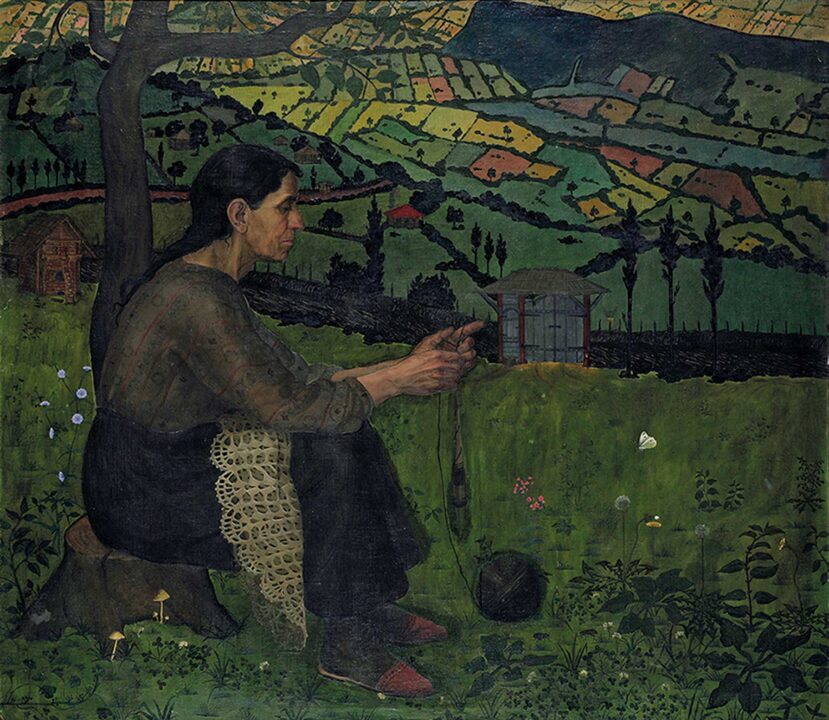
Photo Source: Atinati
He could have been known as one of the pioneers of three-dimensional cinema, thanks to the camera that he invented in Paris in 1923, but his role as a painter outweighs his achievements in cinematography. David was born in a small village in West Georgia in 1889 in a very poor family, but his multilateral talent was soon noticed by local philanthropists and was sent to St Petersburg to study mathematics and physics. His scientific training, later on influenced the superb quality of his creative work. His gift of painting fully flourished in Paris where he lived in 1919 – 1927. He participated in the exhibitions together with Kandinski, Miro, Duchamp and many other well-known painters. Kakabadze’s art varies from ‘subjectless” abstract paintings to cubism and warm colored landscapes of his homeland. The fatal mistake that he made was returning to Soviet Georgia, where his Parisian works were considered too formalistic, since the abstract art was outlawed.
Petre Otskheli – expressions of brave modern world (1907 – 1937)
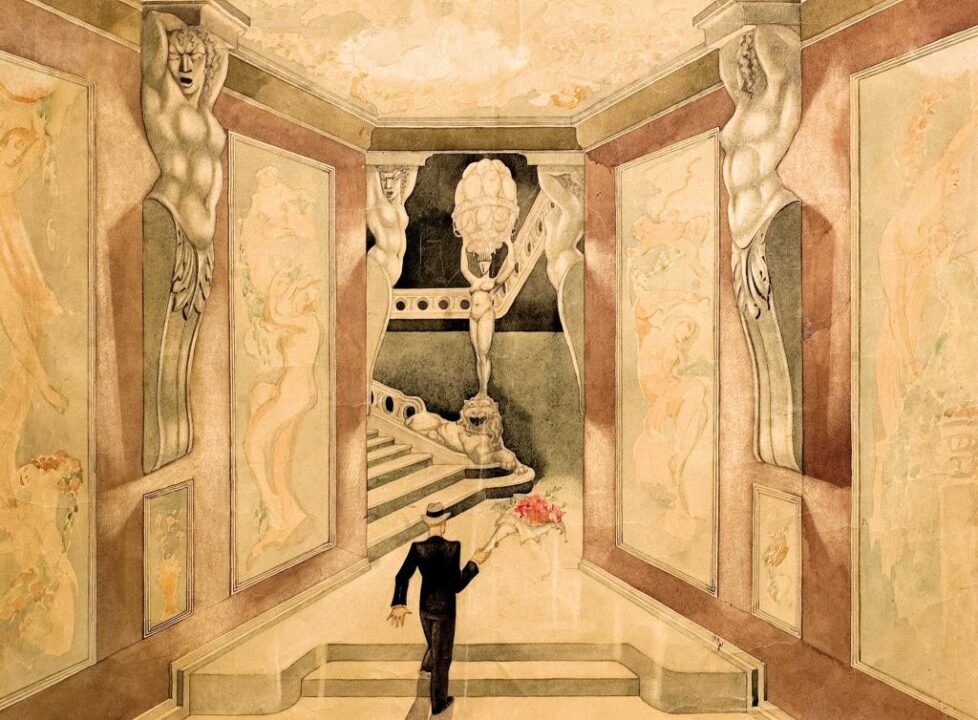
Photo Source: Georgian Journal
Before there was Marvel and Pixar, Georgia had Petre Otskheli, born in 1907, he created the completely untapped new world of scientific superheroes and monumental constructivism. Despite his short life, Otskheli left an invaluable influence on theatre stage production and many of his sketches for theatre became masterpieces of graphic arts. He was the master of creating metaphysical, space-themed atmosphere on stage by sharply accentuated forms of the figures with a bit of exaggeration and static constructivism of the surrounding architecture. You can almost hear the characters of his paintings speaking, you can feel the depth of their voices and predict the sophistication of their movement. Being a brave innovator had a high cost in Soviet Georgia. 30 years old artist was arrested and shot on trumped-up charges of treason in Moscow.
Solomon (Soliko) Virsaladze – master of bringing the intermixture of texture and motion on the paper (1909 – 1989)
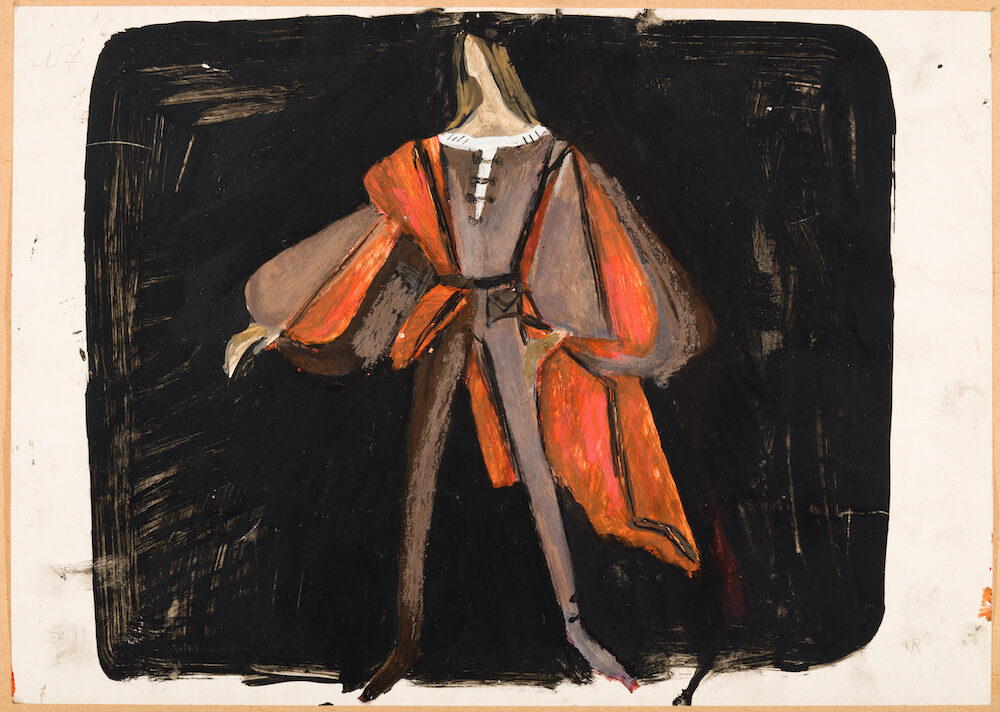
Photo Source: Atinati
Could he have been a high fashion designer if born the right time in right country? No. Because he is a pure artist characterized by balancing the moderation, color variety and refinement. He managed to mingle Georgian ethnic details and ornaments with European luxurious textures and came up with the dancing costumes of Georgian National Ballet. He was chief designer of the Bolshoi Ballet in Moscow from 1964 until his death and collaborated with many worldwide known choreographers.
Merab Abramishvili – creatures from the Eden garden (1957 – 2006)
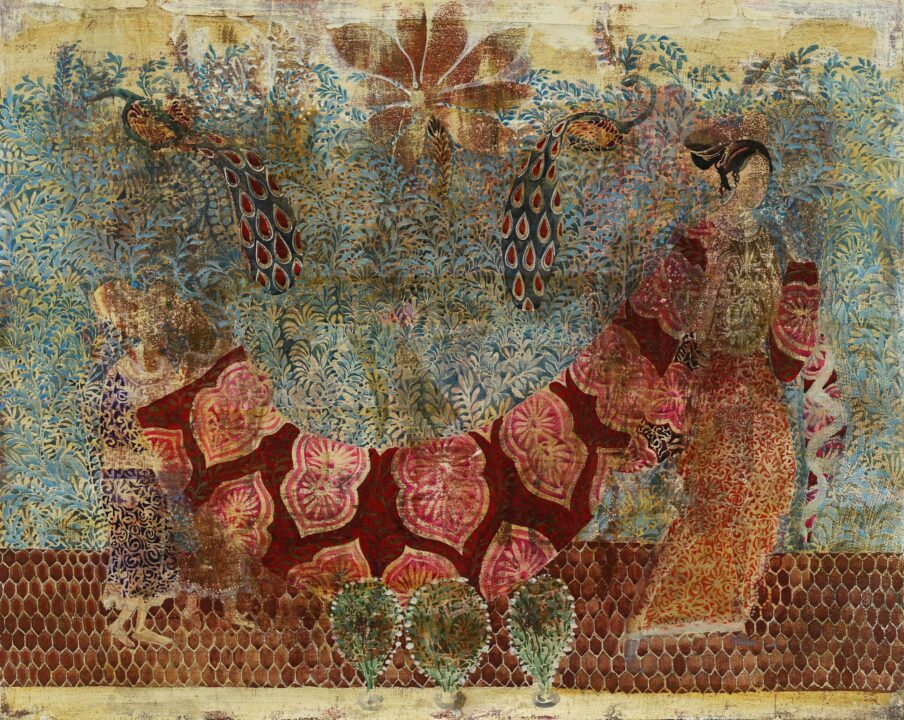
Photo Source: Atinati
Abramishvili’s inspiration were Georgian frescoes of the 7th century that were reflected in his mystical and ethereal images that remind us of Eden garden. He was an extremely modest person, many of his early paintings are not even signed, the simple reason why he started putting his name on his works was that foreigners refused to buy paintings without the name of the author. His childhood dream was to be a tiger tamer, which he achieved only through the canvas and the colors. Lightness and elasticity of the shapes and dynamics of the lines creates the feeling of heavenly peace and grace.
Irakli Parjiani –brightness of innocence and ethereal radiance (1950-1991)
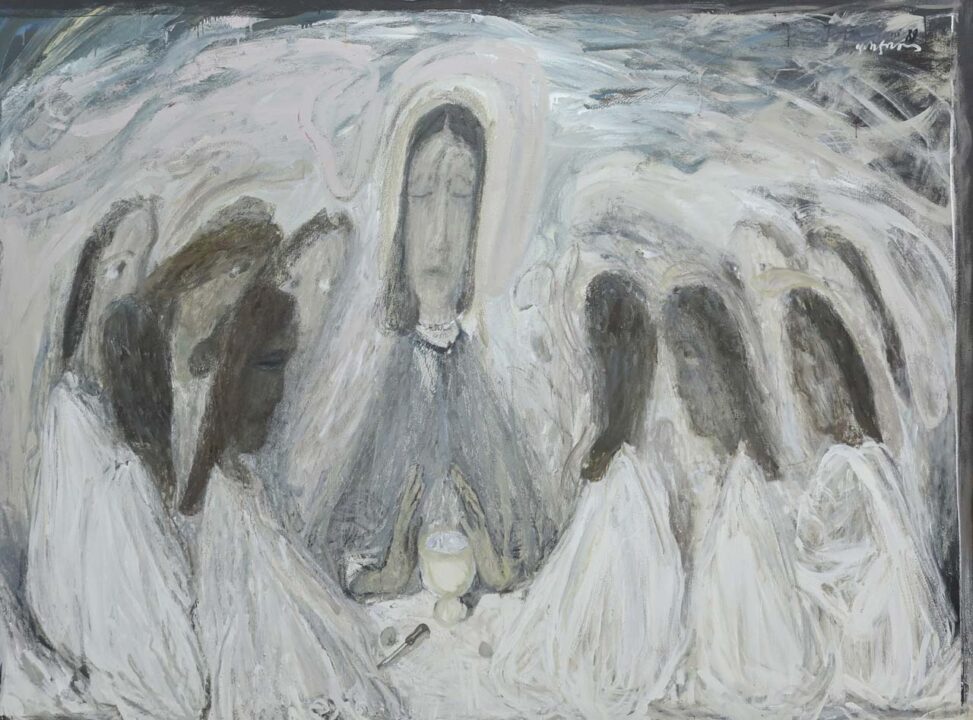
Photo Source: Art.gov.ge
Parjiani was born in Mestia, in high mountainous of Georgia, region that is famous for its distinctive style of religious art and fresco painting. Religious motifs took a significant role in Parjiani’s works, which was quite unusual for a painter of the Soviet period. The artist approaches the color spiritually, white which is the symbol of innocence plays the emotional role in his paintings. While Georgian frescos are rich with deeper colors like maroon, gold and blue, Parjiani tries to express divinity through using white. Looking at his painting we see the picture that is unreal, surrealistic but at the same time so esthetically sophisticated and tangible that we become part of the supernatural process that is happening on the canvas.
Gigo Gabashvili – depth of Georgian mountainous character (1862 – 1936)
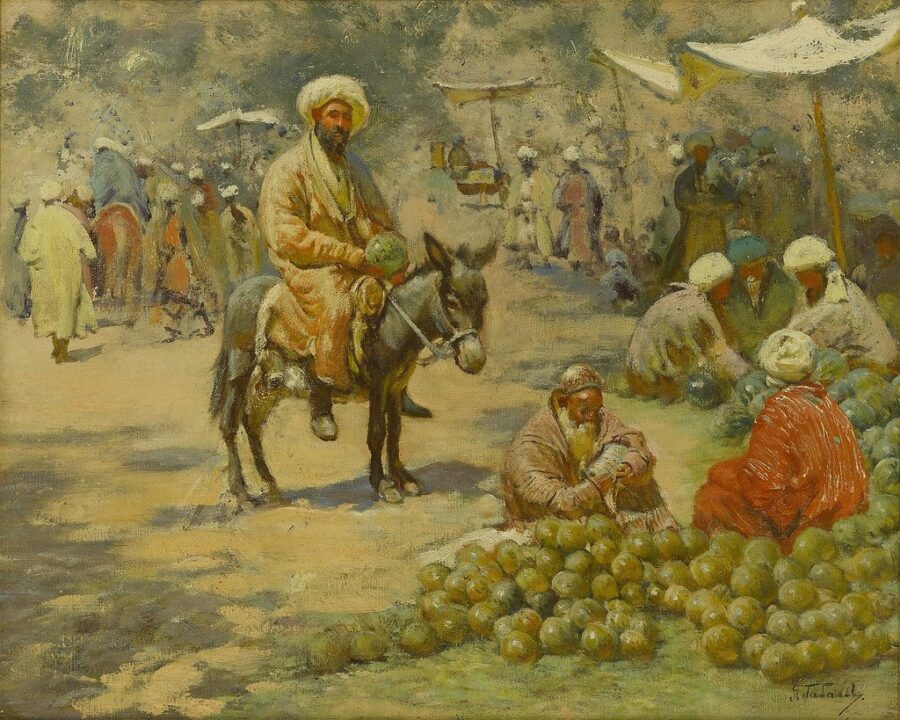
Photo Source: Flickr
The first Georgian realist painter who influenced many generations and showed by his example that a truly talented artist can excel in covering a wide range of subjects with different techniques. Vivid portraits, soul-touching colors that balance the tenderness and profundity express the reality intensifying the perception of the characters and surroundings.
Gabashvili was one of the founding professors of the Tbilisi Academy of Arts in 1922 and was granted the title of the People’s Artist of the Georgian Soviet Socialist Republic in 1929.
Avto Varazi – excellence from classics to pop art (1926 – 1977)
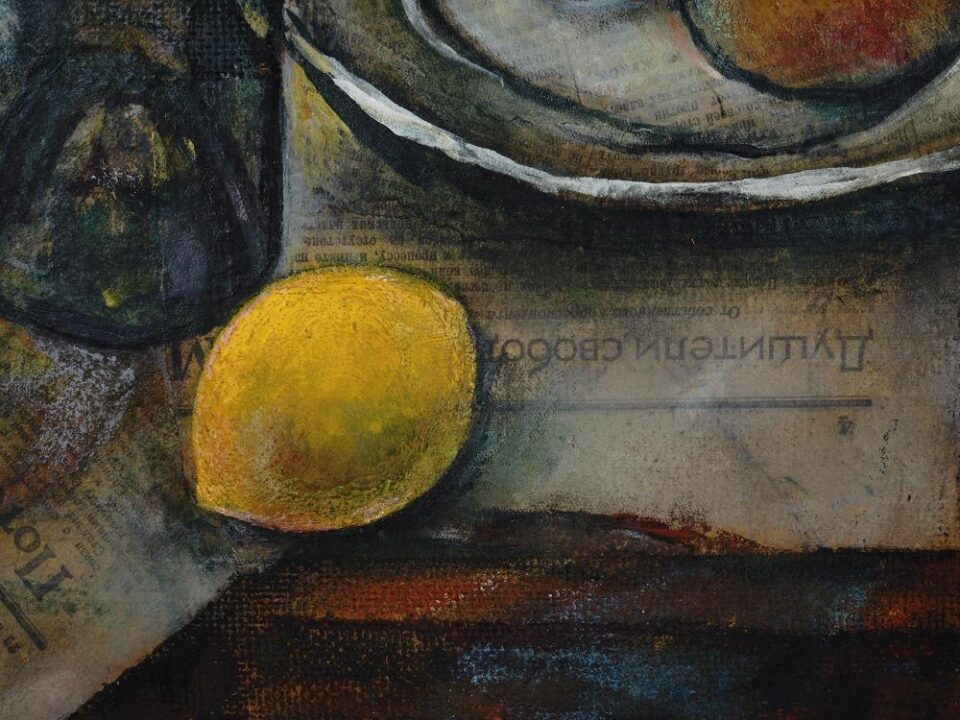
Photo Source: Invaluable
His portraits perfectly well express the sadness and wisdom that lead to maturity of the inner world. He paid equal attention to objects and spaces between them. His approach to expressing reality in a simple way led him to experiments in Pop Art. Varazi was the first brave pioneer in this direction in Georgia. His first exhibition took place in 1977, right after his death. His paintings are spread in the most famous museums of the world, Bull’s Head is currently kept at MoMa
Elene Akhvlediani – warmth and relaxed intimacy between people and landscapes (1901 – 1975)

Photo Source: Atinati
The reason why her paintings have been used to illustrate the works of the most famous Georgian writers is the coziness and romanticism of the depicted pictures. The paintings make the viewer want to become the part of them, explore every detail of it. She studied art in Rome and Paris in 1920s but the booming artistic life and conscience of famous painters did not influence her works and she managed to develop her skills to perfectionism while keeping the authentic vision.
Vera Pagava – feeling depth and space through geometry (1907-1988)
Pagava’s paintings are the perfect combination of feminine tenderness mixed with strongly articulated geometric figures and blending abstract figures with down-to-earth reality. The painter creates the spaces of meditation, enlightenment, achieved through the absolute simplicity of color and shape. Vera was born in Tbilisi, Georgia, in 1907. She and her family found refuge in France in 1923 – when the U.S.S. Annexed Georgia after the occupation by the Red Army. She lived and worked in France till the end of her life, therefore her work is as ell the part of the French cultural heritage.

Photo Source: Art.gov.ge
Lado Gudiashvili – expression of chic opulence and the pleasures of this world (1896 – 1980)

Photo Source: Check 24
Gudiashvili’s style of dramatic grotesque with the charm of poetic mystery was achieved through his clear rhythmic lines combined with the artistic outlook of European Modernism with a new emphasis on the depiction of a human body. After spending several years in Paris, he developed the style that is a stunning example of Georgian folklore seen through the prism of French impressionism. His later works were much influenced by the limitations of soviet regime and censorship. Beautiful women imagined as the mysterious “Goddess of the Earth” were approved and much loved by Stalin.
Eteri Chkadua – on the verge of a reality and a painting.
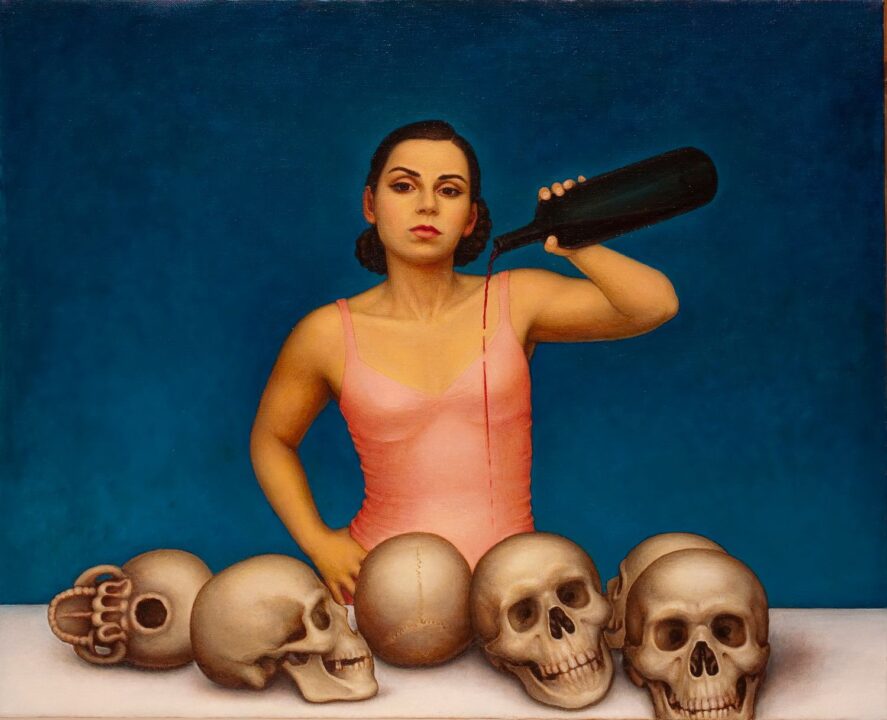
Photo Source: Pinterest
Viewer can see her bright and ‘fauvist’ nature in her every painting, the passion and thirst for life pouring from her works. She says that most of her characters are her alter egos, therefore makes believe that a single human being can encompass the whole world in oneself. Chkadua currently lives in USA and continues to evolve her art year after year through honesty, courage and clarity of her messages.
We created Memo — a brand where Georgian memories come to life.
Visit Memo By GSH and take a piece of Georgia with you – Www.memories.ge




